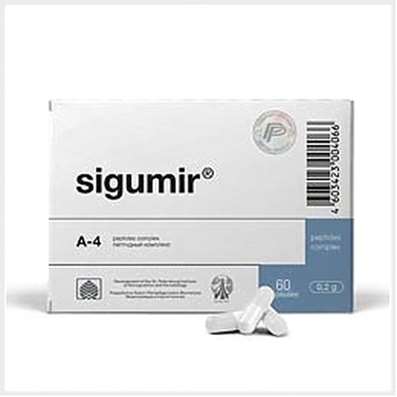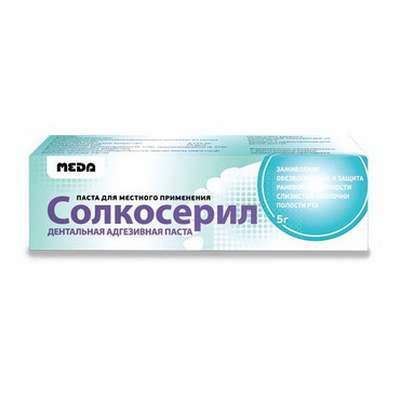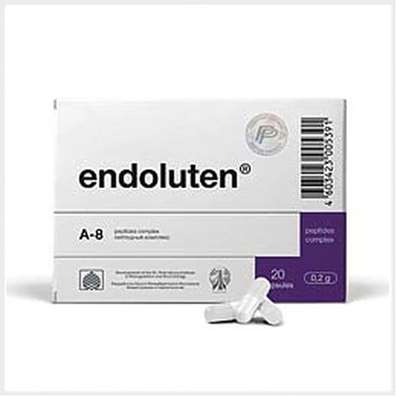Instruction for use: Acetylsalicylic acid + Ascorbic acid (Acidum acetylsalicylicum+Acidum ascorbinicum)
I want this, give me price
Pharmacological groups
NSAIDs - Salicylic acid derivatives
Nosological classification (ICD-10)
G43.9 Migraine, unspecified
Migraine, Acute migraine attack
G44.8 Other specified headache syndrome
I40.8 Other acute myocarditis
K08.8.0 * Painful toothache
Dentinal pain, Dentinal pains, Pain pulpitis, Anesthesia in dentistry, Pain syndromes in dental practice, Pain after removal of tartar, Pain when extracting a tooth, Toothache, Pain after dental interventions
M05 Seropositive rheumatoid arthritis
Rheumatoid arthritis seropositive
M06 Other rheumatoid arthritis
M25.5 Pain in the joint
Arthralgia, Pain syndrome in musculo-articular diseases, Pain syndrome in osteoarthritis, Pain syndrome in osteoarthritis, Pain syndrome in acute inflammatory diseases of the musculoskeletal system, Pain syndrome in chronic inflammatory diseases of the musculoskeletal system, Pain in the joints, Soreness of the joints, Soreness of joints in severe physical exertion, Painful inflammatory joint damage, Painful conditions of the musculoskeletal system, Painful joint conditions, Painful traumatic affection of joints, Pain in the musculoskeletal system, Pain in Shoulder Joints, Pain in the joints, Joint pain, Joint pain with injuries, Musculoskeletal pain, Pain with osteoarthritis, Pain in the pathology of the joints, Pain in rheumatoid arthritis, Pain in chronic degenerative bone diseases, Pain in chronic degenerative joint diseases, Bone-joint pain, Joint pain, Arthritic pain of rheumatic origin, Articular pain syndrome, Joint pain, Rheumatic pain, Rheumatic pains
M79.0 Other unspecified rheumatism
Degenerative rheumatic disease, Degenerative and rheumatic diseases of the tendons, Degenerative rheumatic diseases, Localized forms of rheumatism of soft tissues, Rheumatism, Rheumatism with a pronounced allergic component, Rheumatism of the articular and extraarticular, Rheumatic attack, Rheumatic complaints, Rheumatic diseases, Rheumatic disease of the spine, Relapses of rheumatism, Articular and extra-articular rheumatism, Articular and muscular rheumatism, Articular rheumatism, Articular syndrome with rheumatism, Chronic rheumatic pain, Chronic articular rheumatism, Rheumatoid diseases, Rheumatic diseases of the intervertebral disc
M79.1 Myalgia
Myofascial pain syndromes ,Pain syndrome in musculo-articular diseases, Pain syndrome in chronic inflammatory diseases of the musculoskeletal system, Pain in the muscles, Tenderness of muscles, Muscular soreness in severe physical exertion, Painful conditions of the musculoskeletal system, Pain in the musculoskeletal system, Pain in the muscles, Pain at rest, Muscle aches, Muscle pain, Musculoskeletal pain, Myalgia, Muscle pain, Muscle pain at rest, Muscle pain, Muscular pain of non-rheumatic origin, Muscle pain of rheumatic origin, Acute muscle pain, Rheumatic pain, Rheumatic pains, Myofascial syndrome, Fibromyalgia
M79.2 Neurology and neuritis, unspecified
Pain syndrome with neuralgia, Brachialgia, Occipital and intercostal neuralgia, Neuralgia, Neuralgic pain, Neuralgia, Neuralgia of intercostal nerves,Neuralgia of the posterior tibial nerve, Neuritis, Neuritis traumatic, Neuritis, Neurological Pain Syndromes, Neurological contractures with spasms, Acute neuritis, Peripheral neuritis,Post-traumatic neuralgia,Severe pain of a neurogenic nature, Chronic neuritis, Essential neuralgia
N94.6 Dysmenorrhea Unspecified
Pain during menstruation, Functional disorders of the menstrual cycle, Menstrual cramps, Emmeniopathy, Pain during menstruation, Painful menstrual irregularities, algomenorrhea, algomenoreya, Pain smooth muscle spasm, Pain spasm of smooth muscles (renal and biliary colic, intestinal spasms, dysmenorrhea), Pain spasm of smooth muscles of internal organs (kidney and biliary colic, intestinal spasms, dysmenorrhea), Disalgomenoreya, dysmenorrhea, Dysmenorrhea (essential) (Exfoliative), menstrual disorder, menstruation painful, metrorrhagia, Violation of the menstrual cycle, Menstrual irregularities, Prolaktinzavisimoe menstrual disorders, Prolaktinzavisimoe menstrual dysfunction, Pain spasm of smooth muscles of internal organs, Spasmodic dysmenorrhea, Primary disalgomenoreya
R50 Fever of unknown origin
Malignant hyperthermia, Hyperthermia malignant
R51 Headache
Pain in the head, Cephalgia, Pain with sinusitis, Pain in the back of the head, Painful headache, Headache of vasomotor genesis, Headache of vasomotor origin, Headache with vasomotor disorders, Headache, Neurological headache, Serial headache
R52.2 Other constant pain
Pain syndrome, rheumatic origin, Pain at vertebral lesions, Pain in the chamber, Pain for burns, Pain syndrome weak or moderate, Perioperative pain,Moderate to severe pain, Moderately or weakly expressed pain syndrome, Moderate to severe pain, Ear pain of otitis, Neuropathic pain, neuropathic pain
R52.9 Unspecified Pain
Pain after cholecystectomy, Pain shooting, Non-malignant pain, Obstetric and gynecological pain, Pain syndrome, Pain in the postoperative period, Pain in the postoperative period after orthopedic surgery, Pain of inflammatory genesis, Pain than cancer genesis, Pain syndrome after diagnostic procedures, Pain after surgery Diagnostic, Pain after surgery, Pain after orthopedic surgery, Pain after injuries, Pain after the removal of hemorrhoids, Pain at the non-rheumatic inflammation of nature, Pain in inflammatory lesions of the peripheral nervous system, Pain in diabetic neuropathy, Pain in acute inflammatory diseases of the musculoskeletal system, Pain when the tendon pathology, Pain smooth muscle spasm, Pain spasm of smooth muscles (renal and biliary colic, intestinal spasms, dysmenorrhea), Pain spasm of smooth muscles of internal organs, Pain spasm of smooth muscles of internal organs (kidney and biliary colic, intestinal spasms, dysmenorrhea), Pain in trauma syndrome, Pain with injuries and after surgical interventions, Pain in chronic inflammatory diseases of the musculoskeletal system, Pain with duodenal ulcer, Pain syndrome in gastric ulcer, Pain syndrome in gastric ulcer and duodenal ulcer, pain, Pain during menstruation, pain syndromes, painful condition, Painful foot fatigue, Sore gums when wearing dentures, Soreness of the cranial nerves exit points, Painful menstrual irregularities, Painful dressings, Painful muscle spasm, Painful teeth growth, Melosalgia, Pain in the area of the surgical wound, Pain in the postoperative period, Pain in the body, Pain after diagnostic procedures, Pain after orthopedic surgery, Pain after surgery, The pains of the flu, Pain in diabetic polyneuropathy, Pain for burns, Pain during sexual intercourse, Pain during diagnostic procedures, Pain during therapeutic procedures, for colds Pain, Pain in sinusitis, Pain in trauma, Pain traumatic, The pain in the postoperative period, Pain after diagnostic procedures, The pain after sclerotherapy, Pain after surgery, postoperative Pain, Pain postoperative and posttraumatic, posttraumatic pain, Pain when swallowing, Pain in infectious and inflammatory diseases of the upper respiratory tract, The pain of burns, The pain in traumatic muscle injury, Pain in trauma, The pain of tooth extraction, The pain of traumatic origin, Pain caused by spasm of smooth muscles, Expressed pain syndrome, Expressed pain syndrome, traumatic origin, Postoperative pain, Post-traumatic pain, Post-traumatic pain syndrome, Torpid pain, Traumatic pain, Traumatic pain, Mild pain, Moderately severe pain, Moderate pain, Polyarthralgia with polymyositis
Pharmacotherapy
Combined drug, the effect of which is determined by the components that make up its composition. ASA indiscriminately depresses COX1 and COX2, disrupting the metabolism of arachidonic acid, reducing the synthesis of Pg. Has a strong analgesic, antipyretic and anti-inflammatory effect; reduces the synthesis of thromboxane and inhibits the aggregation of platelets, lowering the coagulation status of the blood. ASA, inhibiting COX1 and COX2, disrupts the synthesis of Pg, has anti-inflammatory, antipyretic and analgesic effect, inhibits platelet aggregation. Ascorbic acid participates in the regulation of oxidation-reduction processes, carbohydrate metabolism, blood coagulability, tissue regeneration, in the synthesis of steroid hormones; increases the body's resistance to infections, reduces vascular permeability, reduces the need for vitamins B1, B2, A, E, folic acid, pantothenic acid. Satisfies the increased needs of the body in vitamin C for diseases accompanied by fever.
Indications
Feverish syndrome with infectious and inflammatory diseases; pain syndrome (of different genesis) in adults: headache (including associated with alcohol withdrawal syndrome), migraine, toothache, neuralgia, myalgia, arthralgia, algodismenorea.
Contraindications
Hypersensitivity; erosive and ulcerative lesions of the gastrointestinal tract (in the phase of exacerbation), gastrointestinal bleeding; bronchial asthma, urticaria or acute rhinitis, induced by the use of ASA and other NSAIDs; hemophilia, hemorrhagic diathesis, hypoprothrombinemia, portal hypertension; avitaminosis K; kidney failure; pregnancy (I and III trimesters), lactation period; deficiency of glucose-6-phosphate dehydrogenase, children's age (under 15 years - the risk of developing Reye syndrome in children with hyperthermia in the background of viral diseases).
Carefully. Gout, liver disease.
Dosing
Inside. The average single dose for adults and children over 15 years - 1-2 tablets (depending on the content of ASA and indications) 2-3 times a day, the highest daily dose - 8-10 tablets; the frequency of reception is 2-4 times a day with an interval of at least 4 hours.
In the form of granules, adults and adolescents are prescribed in a single dose containing 0.5 g ASA; daily dose - 2.5 g.
Immediately before use, the granulate is dissolved in 200 ml of water.
Side effect
Nausea, decreased appetite, gastralgia, diarrhea, erosive-ulcerative lesions, bleeding in the digestive tract (gastrointestinal tract); allergic reactions (skin rash, angioedema); bronchospasm; increased activity of "liver" transaminases, hyperbilirubinemia, impaired renal function; thrombocytopenia.
With prolonged use - dizziness, headache, visual impairment, tinnitus, vomiting, decreased platelet aggregation, hypocoagulation, bleeding; kidney damage with papillary necrosis; deafness; malignant exudative erythema (Stevens-Johnson syndrome), toxic epidermal necrolysis (Lyell's syndrome), Reye's syndrome in children (hyperpyrexia, metabolic acidosis, disorders of the nervous system and psyche, vomiting, liver dysfunction).
Overdose
Symptoms: with light intoxication - nausea, vomiting, gastralgia, dizziness, ringing in the ears. After a severe overdose - inhibition, drowsiness, collapse, convulsions, shortness of breath, anuria, bleeding. Initially, central hyperventilation of the lungs leads to respiratory alkalosis (dyspnea, choking, cyanosis, sweating). With increasing intoxication, progressive paralysis of respiration and dissociation of oxidative phosphorylation cause respiratory acidosis.
Treatment: continuous monitoring of CBS and electrolyte balance; depending on the state of metabolism - the introduction of sodium bicarbonate, sodium citrate or sodium lactate. Increased reserve alkalinity increases the excretion of ASA due to alkalinization of urine.
Interaction
Enhances the effect of heparin, oral anticoagulants, reserpine, steroid hormones and hypoglycemic drugs (drug).
NSAIDs (non-steroidal anti-inflammatory drugs), methotrexate, increase the risk of side effects.
Reduces the effectiveness of spironolactone, furosemide, hypotensive drugs, as well as antidotal drugs that promote the excretion of uric acid.
Special instructions
Children should not be prescribed drugs containing ASA, since in the case of a viral infection they can increase the risk of developing Reye's syndrome. Symptoms of Reye's syndrome include prolonged vomiting, acute encephalopathy, and enlargement of the liver.
With continued use of the drug, control of peripheral blood and the functional state of the liver is necessary.
Because ASA slows blood clotting, the patient, if he is to undergo surgery, must warn the doctor in advance about taking the drug.
Patients with hypersensitivity, or with asthmatic reactions to salicylates or their derivatives, ASA can be prescribed only with special precautions (in an emergency care setting).
ASA in low doses reduces the excretion of uric acid. In patients with a corresponding predisposition, this can in some cases provoke a gout attack.
During treatment should be abandoned the use of ethanol (increased risk of gastrointestinal bleeding).
ASA has a teratogenic effect; when applied in the first trimester leads to a developmental malformation - the cleavage of the upper palate; in the third trimester - to inhibition of labor (inhibition of Pg synthesis), closure of the arterial duct in the fetus, which causes hyperplasia of the pulmonary vessels and hypertension in the vessels of the small circle of blood circulation. Isolated with breast milk, which increases the risk of bleeding in the child due to impaired platelet function.

 Cart
Cart





